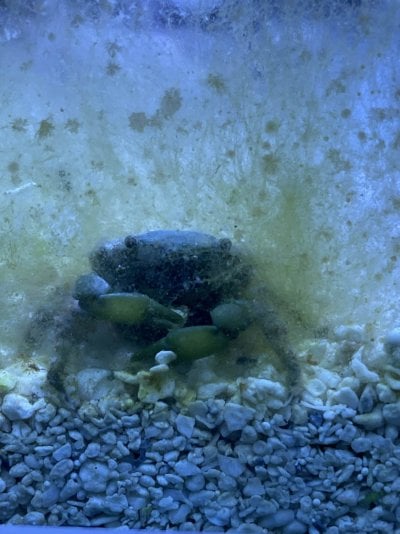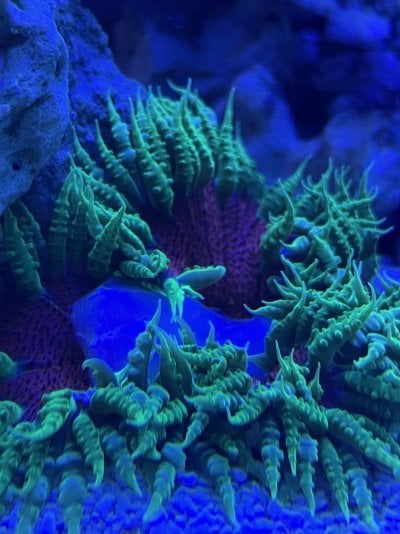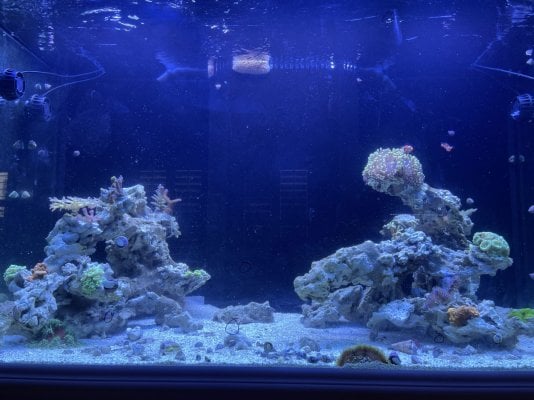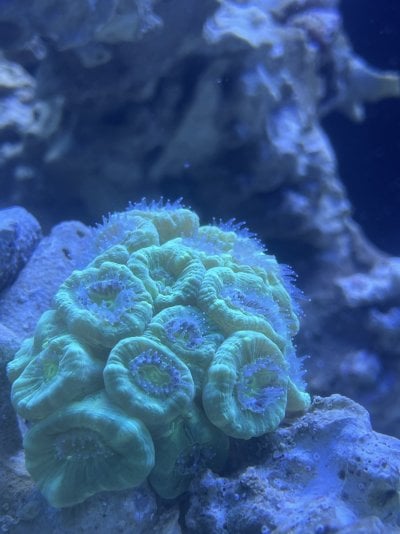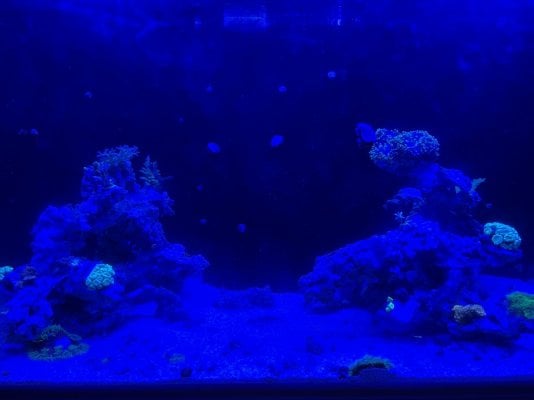- Joined
- Sep 21, 2018
- Messages
- 7,571
- Reaction score
- 7,962
Thanks for the comments guys.
Suppose this was the setup. Lets think about a fairly difficult scenar
Here is a story.
1. Dry rock in the water. No display lights yet.
There is enough nutrients, mostly from the salt mix, to support bacteria growth. Surfaces will become slimy to the touch
2. Get a refugium or ats or algae rector set up and running.
Connecting a device with live macro algae introduces many types of microorganisms into this nutrient depleted system. The macro algae will rapidly become distressed when brightly lit with no nitrogen and little if any phosphate available. Distressed algae start dumping organic carbon into the system which will feed bacteria and mixotrophic algae. Surfaces may start to look fuzzy and color of growth will tend towards yellow to gold.
3. Put some easy corals on the rocks. Fast growing ones preferred.
Additional inoculation of microorganisms to a nutrient depleted environment. Depending on the time from first fill, there could be some established golden ecologies that will be persistent.
4. Lights on in the display.
Photosynthetic microorganisms start to colonize the biofilm coated surfaces. Macro algae “spores” also settle on new surfaces
5. N and P dose the tank to feed the corals. Could be nitrate or ammonia or urea for N. Could be a fixed dose, just as one might feed foods, without tracking anything by testing.
Microorganisms at this time could be capable of vacuuming up all N and P. Corals like starving algae would probably be stressed. Do they exude organics? If they do, they also feed microorganisms.
6. Slowly expand dosing and organisms. Maybe add in an algae eating fish if needed.
By this point, the uglies are well established
7. As consumers of nutrients expand in numbers, add more producers such as fish, crabs, shrimp, etc
So what things are likely to go wrong, or at least are likely to be worse than dry rock cycling with bacteria additions?










